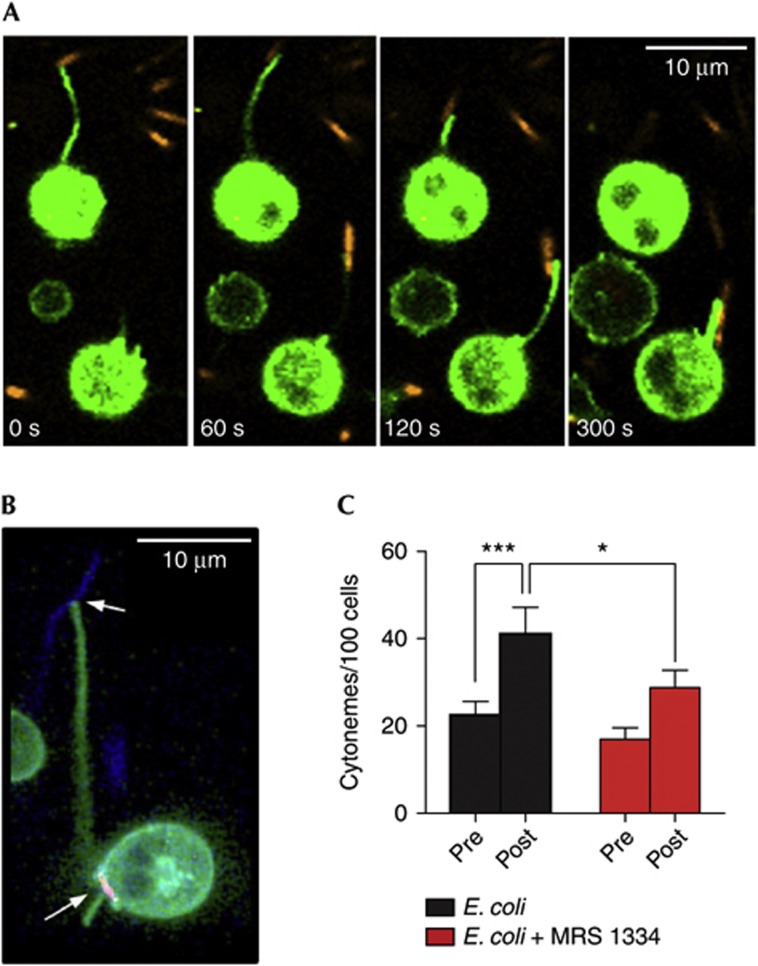Figure 4.
Neutrophil cytonemes formed in response to E. coli exposure are capable of tethering and ‘reeling in’ bacteria for phagocytosis. (A) Time-lapse confocal imaging shows neutrophils (Vybrant DiO labelled; green) can capture E. coli (SYTO 83 labelled; orange) via extension of cytonemes, which are rapidly retracted for phagocytosis. (B) Imaging of CA200645-labelled neutrophils showed bacteria-tethering cytonemes are associated with A3AR plaques (red); SYTO 83-labelled E. coli are pseudocoloured blue. (C) Exposure of neutrophils to E. coli promotes cytoneme extension, an effect inhibited by MRS1334 (n=26 individual experiments). Data shown are means±s.e.m.; statistical significance was determined via repeated measures analysis of variance with post-hoc Newman–Keuls tests. *P<0.05, ***P<0.001. See also supplementary Videos S1, S2 online. A3AR, A3-adenosine receptor.

